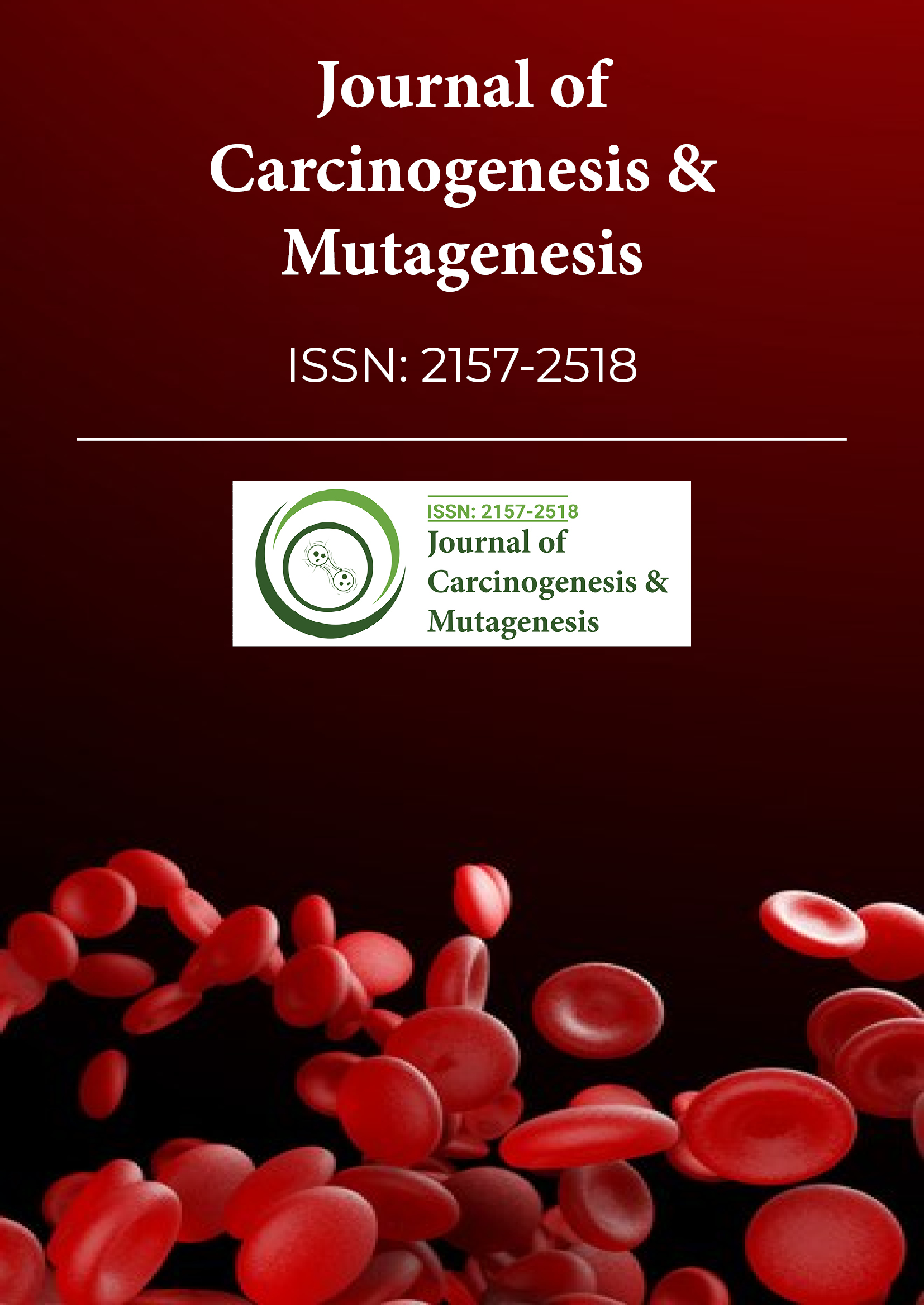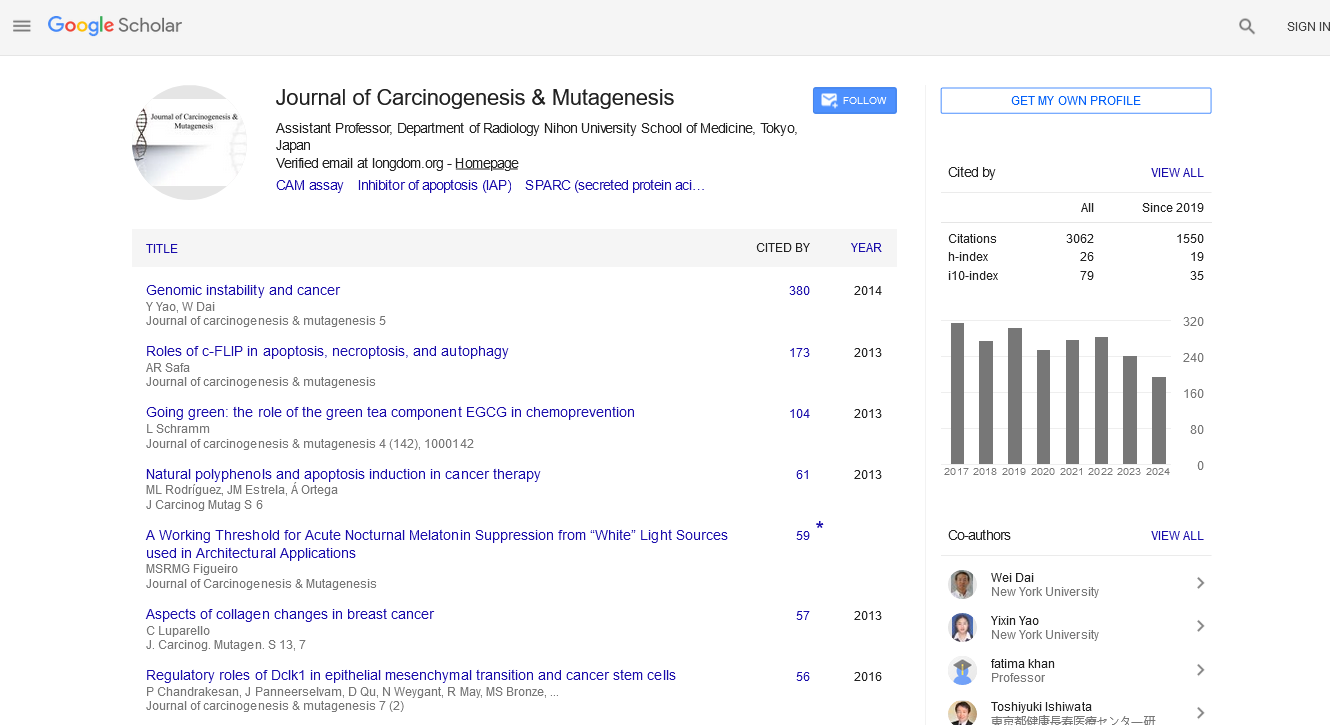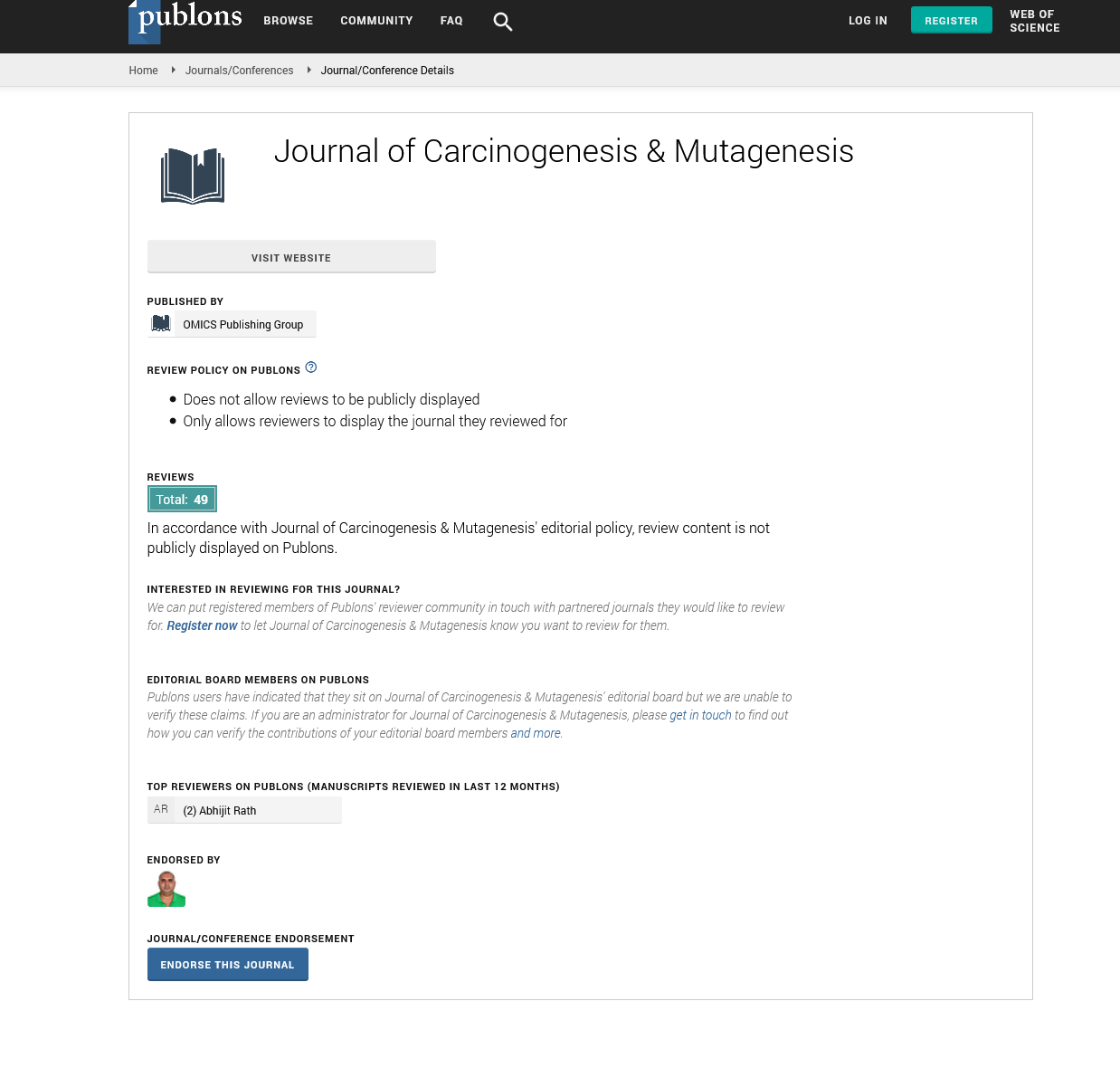Indexed In
- Open J Gate
- Genamics JournalSeek
- JournalTOCs
- Ulrich's Periodicals Directory
- RefSeek
- Hamdard University
- EBSCO A-Z
- OCLC- WorldCat
- Publons
- Geneva Foundation for Medical Education and Research
- Euro Pub
- Google Scholar
Useful Links
Share This Page
Journal Flyer

Open Access Journals
- Agri and Aquaculture
- Biochemistry
- Bioinformatics & Systems Biology
- Business & Management
- Chemistry
- Clinical Sciences
- Engineering
- Food & Nutrition
- General Science
- Genetics & Molecular Biology
- Immunology & Microbiology
- Medical Sciences
- Neuroscience & Psychology
- Nursing & Health Care
- Pharmaceutical Sciences
Perspective - (2023) Volume 0, Issue 0
Histopathological Odyssey: Navigating Primary Pulmonary Hyalinizing Clear Cell Carcinoma
Natasha Rekhtman*Received: 25-Oct-2023, Manuscript No. JCM-23-24232; Editor assigned: 27-Oct-2023, Pre QC No. JCM-23-24232(PQ); Reviewed: 13-Nov-2023, QC No. JCM-23-24232; Revised: 20-Nov-2023, Manuscript No. JCM-23-24232(R); Published: 28-Nov-2023, DOI: 10.35248/2157-2518.23.S40.002
Description
Primary Pulmonary Hyalinizing Clear Cell Carcinoma (PPHCCC) stands as a rare and distinctive entity within the spectrum of lung cancers. Characterized by its unique histopathological features and often presenting as a diagnostic challenge, PPHCCC remains an enigma for many healthcare professionals.
PPHCCC is an exceedingly rare subtype of lung cancer, and its occurrence is limited to the pulmonary parenchyma. First described in the literature in 1999 by Dr. David K. Flieder and colleagues, PPHCCC remains a subject of limited understanding due to its scarcity. The tumor typically affects middle-aged to older adults, with a slight predilection for females. The clinical presentation varies widely, and patients may be asymptomatic or present with nonspecific respiratory symptoms such as cough, dyspnea, or chest pain.
One of the key challenges in diagnosing PPHCCC lies in its histopathological characteristics. Under the microscope, the tumor cells exhibit a distinctive appearance, with clear cytoplasm and a surrounding hyalinized stroma. The clear cells are polygonal to elongated and often arranged in nests or cords. Immunohistochemical staining plays an important role in differentiating PPHCCC from other pulmonary neoplasms. The tumor cells typically express markers such as cytokeratin, Epithelial Membrane Antigen (EMA), and vimentin.
The rarity of PPHCCC and its histological similarities to other clear cell tumors, both primary and metastatic, contribute to the diagnostic challenges associated with this carcinoma. Radiologically, PPHCCC may manifest as a solitary nodule or mass on imaging studies such as chest X-rays, Computed Tomography (CT), or Magnetic Resonance Imaging (MRI). However, these imaging findings are nonspecific, emphasizing the need for histopathological examination for accurate diagnosis.
The differential diagnosis of PPHCCC includes clear cell tumors from various organs, such as Renal Cell Carcinoma (RCC), clear cell adenocarcinoma of the cervix, and clear cell carcinoma of the ovary. Distinguishing PPHCCC from metastatic clear cell renal cell carcinoma is particularly important, as their treatment strategies and prognoses differ significantly.
Given the rarity of PPHCCC, there is no established standard of care for its treatment. Surgical resection, when feasible, remains the primary treatment modality. However, the optimal management approach may vary depending on factors such as tumor size, location, and the overall health of the patient.
In cases where complete surgical resection is not achievable, or in the presence of metastatic disease, clinicians may consider adjuvant therapies. Limited data exist regarding the effectiveness of chemotherapy and radiation therapy in PPHCCC, and the decision to pursue these modalities should be individualized based on the specific clinical scenario.
The prognosis of PPHCCC is challenging to determine due to the scarcity of cases and the limited follow-up data available. Some reports suggest a relatively indolent course, while others describe more aggressive behavior, with recurrence and metastasis. Long-term follow-up is essential, and patients diagnosed with PPHCCC should undergo regular surveillance to detect any potential recurrence or metastatic spread.
Given the rarity of PPHCCC, collaborative efforts among healthcare professionals, pathologists, and researchers are important to better understand the molecular mechanisms underlying this carcinoma. Advances in genomic profiling and molecular diagnostics may contribute to more accurate and targeted therapies for PPHCCC in the future.
Clinical trials exploring novel treatment approaches and investigating potential therapeutic targets are warranted to improve outcomes for patients with PPHCCC. Additionally, the development of consensus guidelines for the diagnosis and management of PPHCCC could enhance the standardization of care and contribute to a better understanding of this rare pulmonary malignancy.
Primary Pulmonary Hyalinizing Clear Cell Carcinoma remains a diagnostic challenge and a rare entity within the realm of lung cancers. Its distinctive histopathological features, coupled with the scarcity of cases, make it essential for healthcare professionals to be vigilant in considering PPHCCC in the differential diagnosis of pulmonary neoplasms. While surgical resection is often the primary treatment modality, the lack of a standardized therapeutic approach highlights the need for further research and collaboration to improve the understanding and management of this rare carcinoma. They focus deeper into the complexity of PPHCCC, they prepare for for more effective diagnostic and therapeutic strategies, ultimately improving outcomes for those affected by this uncommon pulmonary malignancy.
Citation: Rekhtman N (2023) Histopathological Odyssey: Navigating Primary Pulmonary Hyalinizing Clear Cell Carcinoma. J Carcinog Mutagen. S40:002.
Copyright: © 2023 Rekhtman N. This is an open-access article distributed under the terms of the Creative Commons Attribution License, which permits unrestricted use, distribution, and reproduction in any medium, provided the original author and source are credited.


